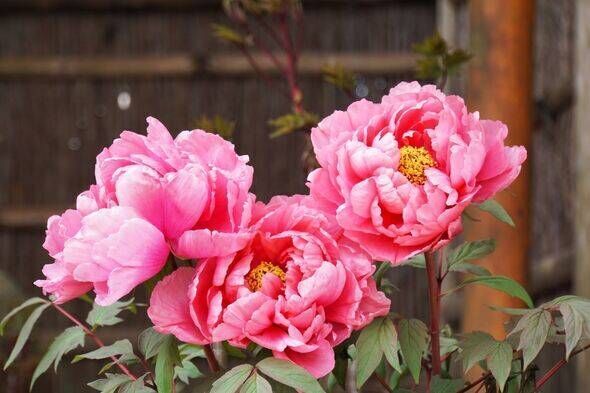Lifestyle
Enhance Your Peonies: Expert Tips for Bigger Blooms Next Year

Peonies can bloom larger and more vibrantly next year with a simple gardening technique, according to expert advice. Renowned gardening specialist Mickey Gast from Blooming Backyard emphasizes the importance of applying organic compost at the right time after flowering. This practice can significantly enhance the health and productivity of these beloved perennial plants.
Peonies are cherished for their striking beauty, often serving as focal points in gardens. They thrive for over two years and typically return each season with impressive displays. However, many gardeners find their peonies underperforming, yielding fewer flowers than anticipated. Gast suggests that understanding the proper fertilization schedule can make all the difference.
According to Gast, there are two crucial periods for fertilizing peonies: pre-bloom and post-bloom. This generally corresponds to early spring and late summer in most climates. During spring, peonies focus on developing new foliage and buds. By nourishing them with the right nutrients at this stage, gardeners can ensure their plants are primed for a robust summer bloom.
Feeding peonies after they flower is also essential. Simple Garden Life indicates that applying nutrients when the flowers fade can boost the plants, allowing them to store energy for the following year. For optimal results, it is recommended to apply half a cup of bone meal per plant after they have finished blooming. This lighter feeding method strengthens the leaves and roots throughout the summer and prepares the plants for even bigger blooms in the subsequent spring.
Timing is crucial when it comes to fertilization. Gardeners should act promptly after flowering concludes, as late feeding may trigger new growth at an inappropriate time, potentially hampering the plant’s overall health.
For those new to cultivating peonies, the Royal Horticultural Society recommends adhering to six fundamental principles. The journey begins with selecting a well-established plant, which sets the groundwork for success. Peonies should be planted in sunny or partially-shaded areas, ensuring the soil has good drainage. The RHS advises that herbaceous peonies should be planted at a depth of 2.5 to 5 cm below the surface for optimal growth.
Additionally, regular annual nourishment with a slow-release, well-balanced feed is crucial. Gardeners should also prune any dead foliage in autumn, preparing the plants for a fresh start in the following year.
By following these expert guidelines, gardeners can significantly improve their peony displays, ensuring a stunning array of blooms that will enhance any garden setting.
-

 Health3 months ago
Health3 months agoNeurologist Warns Excessive Use of Supplements Can Harm Brain
-

 Health3 months ago
Health3 months agoFiona Phillips’ Husband Shares Heartfelt Update on Her Alzheimer’s Journey
-

 Science1 month ago
Science1 month agoBrian Cox Addresses Claims of Alien Probe in 3I/ATLAS Discovery
-

 Science1 month ago
Science1 month agoNASA Investigates Unusual Comet 3I/ATLAS; New Findings Emerge
-

 Science4 weeks ago
Science4 weeks agoScientists Examine 3I/ATLAS: Alien Artifact or Cosmic Oddity?
-

 Entertainment4 months ago
Entertainment4 months agoKerry Katona Discusses Future Baby Plans and Brian McFadden’s Wedding
-

 Science4 weeks ago
Science4 weeks agoNASA Investigates Speedy Object 3I/ATLAS, Sparking Speculation
-

 Entertainment4 months ago
Entertainment4 months agoEmmerdale Faces Tension as Dylan and April’s Lives Hang in the Balance
-

 World3 months ago
World3 months agoCole Palmer’s Cryptic Message to Kobbie Mainoo Following Loan Talks
-

 Science4 weeks ago
Science4 weeks agoNASA Scientists Explore Origins of 3I/ATLAS, a Fast-Moving Visitor
-

 Entertainment4 months ago
Entertainment4 months agoLove Island Star Toni Laite’s Mother Expresses Disappointment Over Coupling Decision
-

 Entertainment3 months ago
Entertainment3 months agoMajor Cast Changes at Coronation Street: Exits and Returns in 2025









